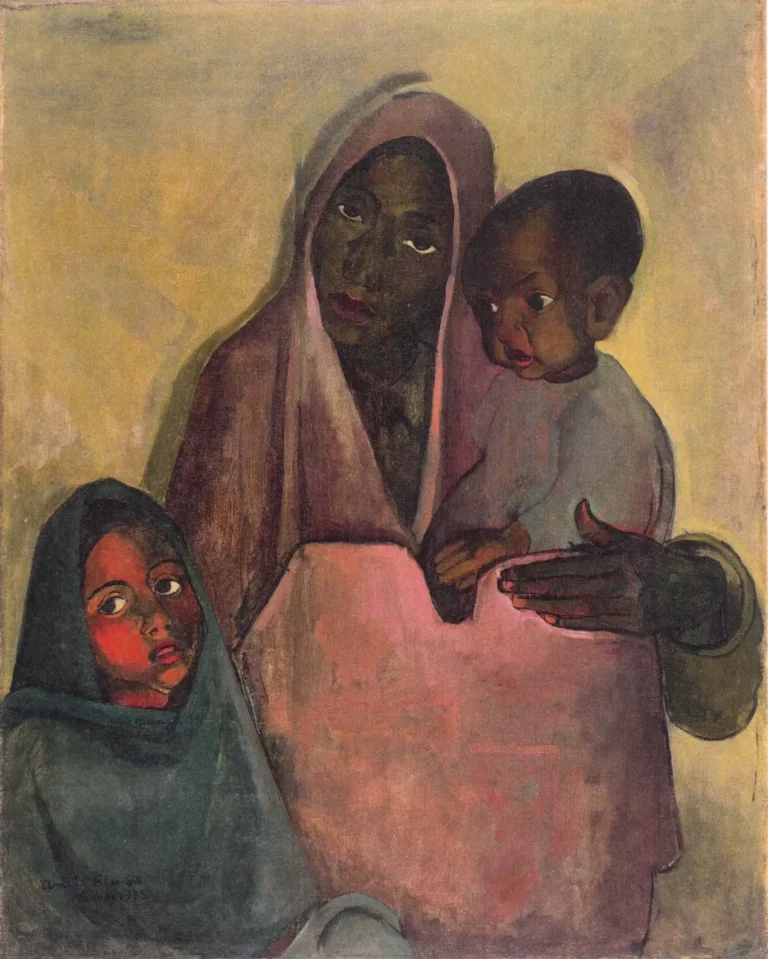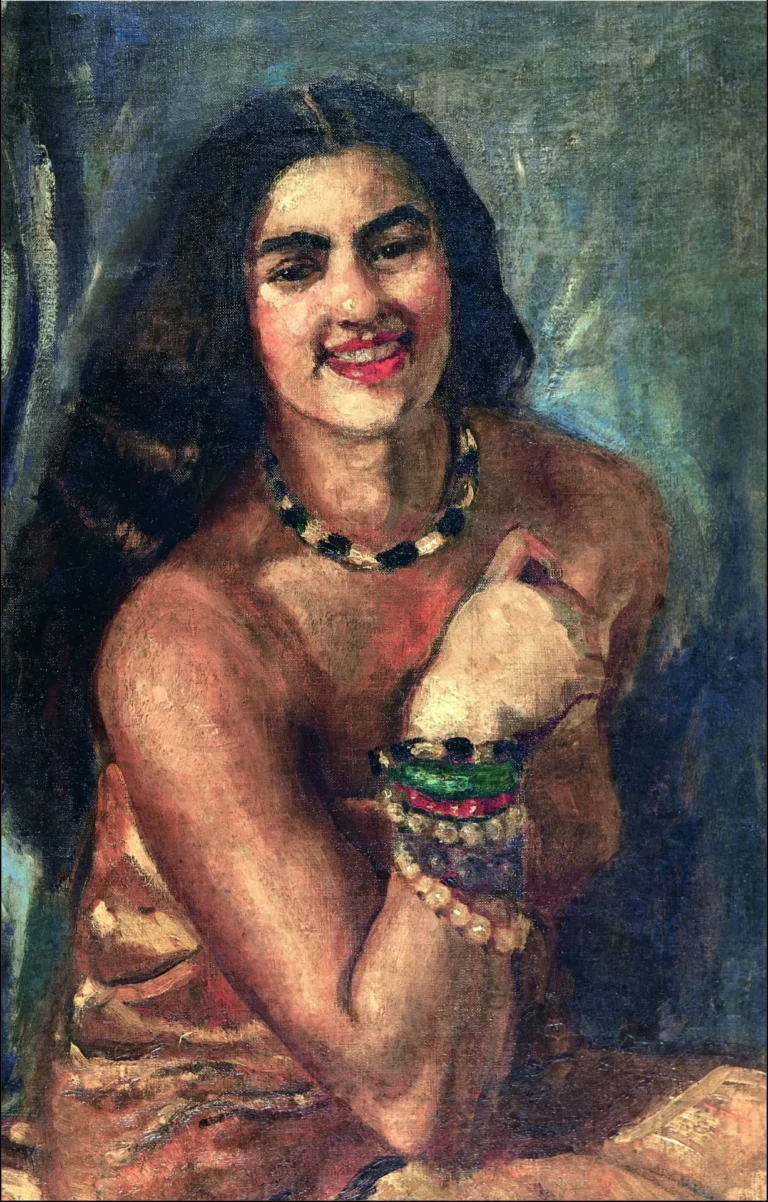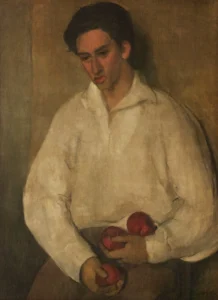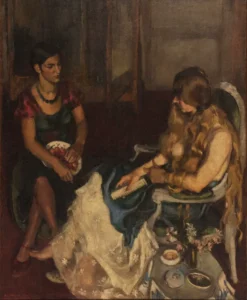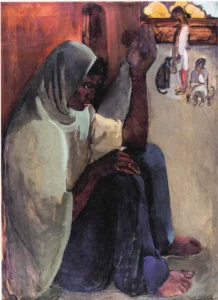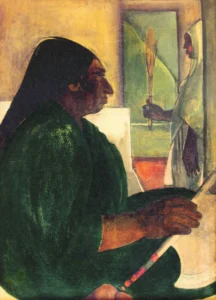Mother India (1935)
Mother India is a compelling painting by Amrita Sher-Gil, depicting a destitute peasant woman, her son, and daughter. Created in 1935, this powerful image emphasizes the harsh realities of rural life in India, diverging from more romanticized portrayals. Sher-Gil's emphasis on realistic hardship captures the essence of the everyday struggles faced by the poor and serves as a crucial representation of her artistic evolution post her Parisian period.
Year 1935
About the Artwork
Painted in 1935, Mother India is not just a reflection of Amrita Sher-Gil's personal journey but an artistic statement against the romanticism of poverty. Upon returning to India in 1934, Sher-Gil sought to represent the raw, unfiltered reality of the Indian populace, particularly those marginalized by society. This painting encapsulates the despair of a 'Beggar Woman' cradling her children, making a heartfelt commentary on societal neglect. It was showcased in the 63rd Simla Fine Arts Exhibition but received mixed reactions—a reflection of the tension between traditional artistry and the evolving realism of the period.
Did You Know
Liked what you see? Add it to your collection.
Enjoyed reading? Share it.
... continued
Subject and Theme
Mother India portrays a poor peasant woman, often referred to as a 'Beggar Woman' in early contexts. The painting features the woman with a boy in her lap and her daughter by her side, highlighting the poverty and hardship faced by rural Indian families.
Artistic Style and Influence
The painting is characterized by its realistic and unflattering depiction of poverty, which was a departure from the more mythological or heroic representations of Mother India by other artists. Sher-Gil's work here is marked by its down-to-earth and melancholic tone, reflecting her focus on the everyday struggles of the Indian poor.
Artistic Period and Evolution
Mother India was painted soon after Sher-Gil's return to India from Paris in 1934. This period marked a significant shift in her artistic vision, as she began to incorporate elements of Indian art traditions, particularly the miniature painting style, into her work. However, Mother India itself does not yet show the full influence of these traditions, which became more pronounced in her later works.
Exhibition and Reception
The painting was exhibited at the 63rd annual Simla Fine Arts Exhibition in September 1935, where it was shown alongside other works by Sher-Gil. Despite being part of this exhibition, Sher-Gil felt that the judges did not recognize the best of her work and declined the prize awarded to her for another piece.
Significance
Mother India is notable for its honest and poignant portrayal of rural Indian life, which was a central theme in Sher-Gil's work during this period. It reflects her aesthetic sensibility, which blended European and Indian elements, and her ability to capture the essence of Indian culture through her art.





